
Raise your hand if you think running alone builds all the strength you need. If you just realized your hand stayed down, you’re not the only one. Many people overlook the power of adding strength training for runners into their weekly routine, but here’s the good news: it’s never too late to level up.
Integrating the right strength workouts, mobility exercises, and cross-training sessions into your plan can transform how your body responds to each mile.
By focusing on balanced strength exercises like single-leg deadlifts, glute bridges, and holding a plank position, you’ll develop stronger muscles, a better running economy, and a reduced risk of injury.
Why does this matter? Your feet, knees, and hips all need support from a stable core and balanced upper body. The reality: running alone doesn’t address muscle imbalances or movement patterns that lead to overuse injuries.
That’s where resistance bands, plyometric exercises, and even lifting heavy weights (safely!) come in, building the durability your body craves for every finish line.
Whether you’re just starting marathon training or training for your next fun run, the right strength routine can be a total game-changer.
So grab a mat, stand with your feet hip-width apart, knees slightly bent, and let’s get stronger together, one rep, one stride, and one powerful run at a time!
Do I Have to Do Strength Training?
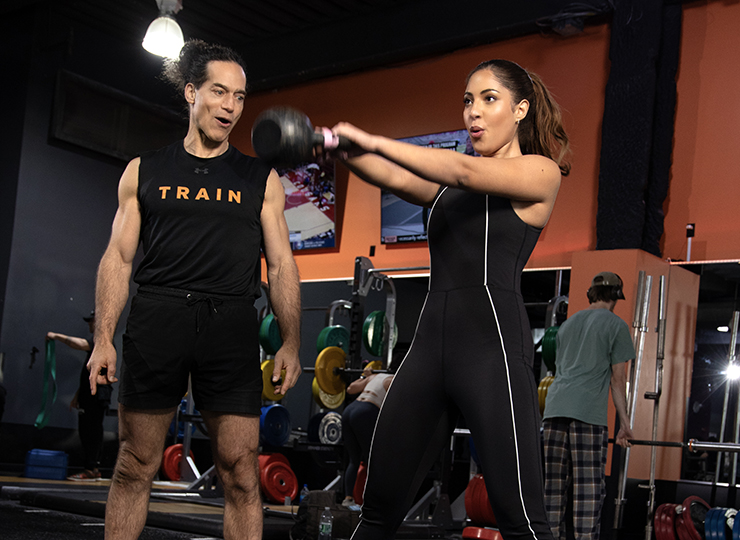
When you’re new to running or increasing your training for that first 5K or marathon, it’s easy to think logging more miles is the only way to get better. However, strength training for runners is just as important as your long runs and recovery days.
Building stronger muscles, improving your running form, and addressing muscle imbalances early on help your body handle increased training volume and keep your joints moving smoothly.
Many runners — including seasoned marathoners — only start focusing on strength work after they’ve battled an injury. Working with a physical therapist or Crunch Fitness-certified coach can help you design the right plan, but you don’t need fancy equipment to get started.
Try adding simple bodyweight moves, such as glute bridges, single-leg exercises, or holding a short plank position after a run.
Small steps will boost your running efficiency, help you avoid injury, and build a foundation that will carry you stronger, further, and faster, mile after mile.
Body Weight Workout Guide for Runners
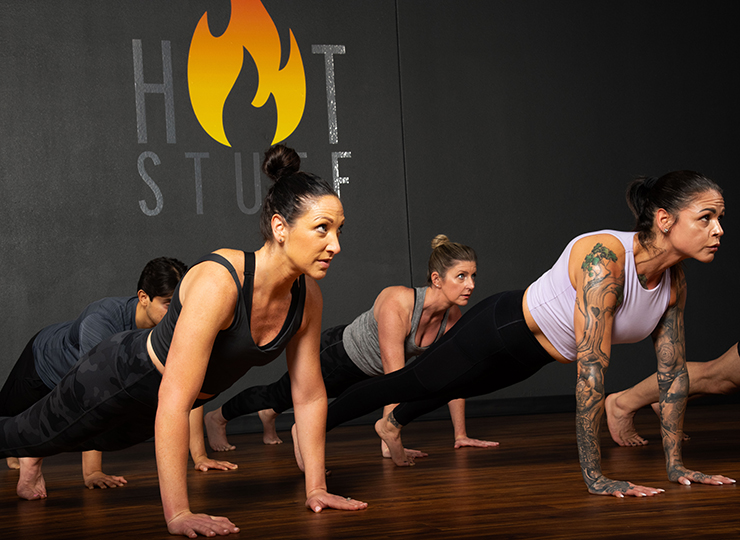
This strength training for runners guide will walk you through simple yet highly effective moves to add to your weekly plan whether you’re a 5K newbie or a long-distance marathoner looking to elevate your performance.
1. Walkouts
Walkouts are a fantastic way to kick off your strength training routine. They wake up your whole body while stretching your hamstrings and calves, a must for healthy, flexible legs.
How to do it:
- Start standing tall with your feet hip-width apart.
- Bend at the hips, keeping your knees slightly bent if needed, and place your hands on the floor.
- Walk your hands forward into a high plank position, hold for a second, and then slowly walk your hands back to the starting position.
- Stand tall and repeat.
Tip: Keep your core tight to protect your lower back. Do 10 reps or repeat for 45–60 seconds.
2. Mountain Climbers
These fiery little moves are perfect for warming up the entire body while dialing up your heart rate. Mountain climbers also train your core, a huge bonus for running form and stability.
How to do it:
- Get into a plank position with your shoulders stacked above your wrists.
- Drive one knee towards your chest, then switch legs quickly, like you’re “running” in place.
- Keep your back flat and core engaged the whole time.
Bonus Tip: Keep a steady rhythm and don’t bounce your hips. Do this for 45–60 seconds.
3. Reverse Lunges
Building single-leg strength is essential for runners. Reverse lunges are top-tier exercises for targeting the glutes, hamstrings, and core, which all work together to support a smooth stride.
How to do it:
- Stand with feet hip-width apart.
- Take a step backward with your right foot, lowering your right knee toward the floor until both knees are bent at about 90 degrees.
- Push through your front heel to return to a standing position, then switch sides.
Pro Tip: Keep your torso upright and core braced. Aim for 10 reps per leg.
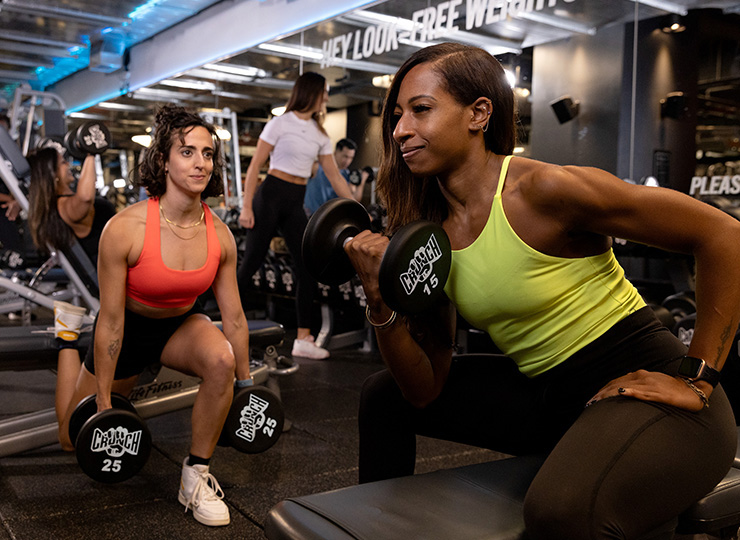
4. Squats
No strength training for runners guide would be complete without squats. Squats fire up your quads, glutes, and core, exactly what you need to run stronger and more efficiently.
How to do it:
- Stand with your feet shoulder-width apart, toes slightly turned out.
- Bend your knees and hips to lower down, keeping your chest lifted and back flat.
- Lower until your thighs are parallel to the ground (or as far as feels good), then push through your heels to return to a standing position.
Tip: Control the movement. Add a light dumbbell or kettlebell for extra resistance. Do 10 reps.
5. Glute Bridges
A strong posterior chain is a runner’s best friend. The glute bridge activates your glutes and hamstrings, helps correct muscle imbalances, and supports a powerful push-off.
How to do it:
- Lie on your back with knees bent, feet flat, and hip-width apart.
- Press your feet into the floor, squeeze your glutes, and lift your hips to create a straight line from shoulders to knees.
- Hold for a second at the top, then slowly lower down.
Make It Harder: Add a resistance band above your knees or place a weight on your hips. Do 15–20 reps.
6. Leg Raises
A rock-solid core leads to a more efficient stride and reduced risk of injury. Leg raises help to strengthen deep core muscles that stabilize your pelvis as you run.
How to do it:
- Lie flat on your back with your legs extended.
- Place hands under your glutes for support.
- With your legs straight, lift your feet toward the ceiling, then slowly lower them back down without letting them touch the floor.
Tip: Keep your lower back pressed into the mat. Do 10 reps.
7. Bear Crawl
This dynamic move engages your shoulders, arms, and core simultaneously. A strong upper body keeps you balanced when fatigue sets in on long runs.
How to do it:
- Start on all fours, tuck your toes under, and lift your knees slightly off the floor.
- Keeping your back flat and hips level, move forward by stepping opposite hand and foot.
- Take small, controlled steps to avoid excessive hip movement.
Pro Tip: Keep your gaze slightly forward. Go for 45–60 seconds.
8. Supermans
Back strength is often overlooked, but strong spinal muscles help maintain good running form and protect you from fatigue. The Superman is a great bodyweight move for runners.
How to do it:
- Lie face down; arms extended overhead.
- Simultaneously lift your arms, chest, and legs off the floor.
- Hold for 3–5 seconds, then slowly lower back down to the starting position.
Tip: Engage your glutes and maintain controlled movement. Do 10 reps.
You can also read our article: Top 10 Exercises for Lower Back Strength
Pro Tips for Strength Training Success
- Focus on form first. It’s better to do fewer reps well than to rush.
- Combine these moves into a best strength training routine for runners 2–3 times per week.
- Warm up properly and add mobility exercises to prevent tight hips and stiff joints.
- Balance your training volume to avoid overuse injuries — more isn’t always better!
- Celebrate your progress — building muscle for long-distance runners takes patience and consistency.
Visit Crunch Fitness
Ready to put these moves into practice? Visit Crunch Fitness at a location near you to incorporate these strength exercises into your routine and enhance your running performance.
Whether you join our strength classes, work with a personal trainer, or use the open space for your solo sessions, you’ll find the tools and community you need to get stronger, run better, and chase that next finish line feeling more confident than ever.
Benefits of Strength Training for Runners
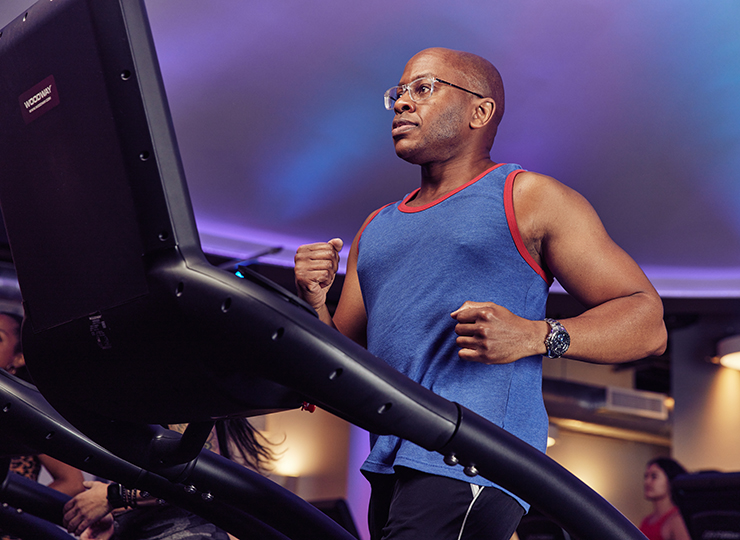
Boosts Endurance
It’s simple but powerful: the stronger you are, the easier it is to carry your body weight mile after mile, and the less likely you are to crash when fatigue hits.
Here’s a peek into why. Running mostly works your type I, or “slow-twitch” muscle fibers. These are endurance heroes that help you maintain a steady pace without tiring too quickly. But when you push up a hill or sprint to the finish line, you call on your type II, or “fast-twitch,” fibers for explosive power.
Smart strength training develops both muscle fiber types, so you’re ready for any challenge your route throws your way.
Saves Energy
When your muscles are strong, your running economy – how efficiently you move – naturally improves.
Research in the Internal Journal of Sports Medicine found that runners who incorporated strength training routines twice a week experienced significant improvements in endurance, speed, and even VO2 max, a measure of aerobic fitness.
That means you’ll use less energy for the same effort and feel stronger during your toughest runs.
Injury Prevention
Running is a one-leg-at-a-time sport. Building total-body strength and stability means each foot strike is safer and more controlled. With dependable core muscles, stronger glutes, and stable joints, you’ll lower your risk of stress injuries and keep your training plan on track.
So next time you’re at Crunch Fitness, add those lunges, squats, and single-leg deadlifts, and your future self will thank you.
Creating a Training Plan That Works for You
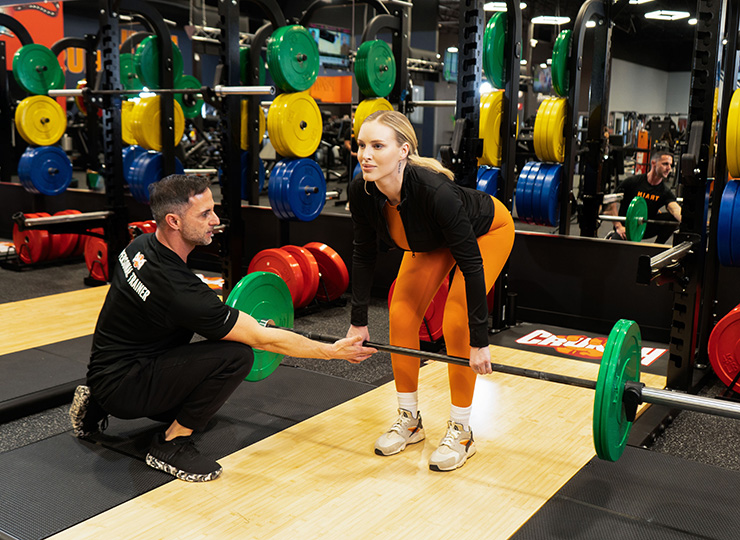
So, you’re ready to add strength training for runners into your weekly routine, but where do you start? Whether you’re on a tight budget, balancing a jam-packed schedule, or training for your first marathon, a smart, flexible plan is key to boosting your running performance without burning out.
On a Budget? You don’t need fancy equipment. Use body weight exercises like squats, lunges, and glute bridges, or grab a resistance band for an extra challenge. Many of these exercises can be done at home, in the park, or right after your run.
Busy Schedule? Keep your sessions short but effective. Just 20–30 minutes of focused strength training, two to three times a week, can make a significant difference. Try stacking moves together — for example, pair single-leg deadlifts with planks for maximum benefit in less time.
Periodize Your Training: For long-term progress, consider how your strength training aligns with your running season. Reduce training volume during peak race weeks and ramp it up in your off-season. A well-balanced plan helps you stay strong, build endurance, and avoid injury.
Remember, you can always pop into your local Crunch Fitness to follow your plan with the right equipment, classes, and a supportive community.
Crunch Fitness provides classes:
- Bodyweb with TRX: Utilize TRX suspension training to perform bodyweight exercises that develop strength, balance, and core stability.
- Chisel: Focus on sculpting and toning muscles through targeted strength exercises.
- Hardcore 360: Engage in a total body workout featuring high-intensity cardio, challenging strength segments, and core exercises designed to push you to the max.
- B30 Body: A nonstop fitness fest of total body strength with barbell cardio and core training, available in 30-minute or 45-minute sessions for a comprehensive workout.
Crunch also makes building muscle fun and effective with expert-led classes like:
- HIIT & Strength: Combines resistance training with cardio for full-body muscle development.
- Badass Bootcamp: Uses heavy weights and bodyweight exercises to build strength and burn fat.
- Strength Training: Focuses on compound lifts like squats, deadlifts, and bench presses.
- ABSolution: Strengthens your core muscles to improve overall strength
- Heavy Metal HIIT: Improve your strength, cardiovascular, core strength, and even your brain.
Join Us!
Crunch promotes a culture of positivity, inclusivity, and fun with no judgments by providing an environment for all individuals regardless of their health and fitness goals. Find a Crunch gym near you to try our free trial membership, or join Crunch now. We’re here for you – at the gym or at home. Access the best live & on-demand workouts anytime, anywhere with Crunch+. Ready to get sweaty? Try hundreds of workouts for free! Start your free trial now!
FAQ’s
When Should Runners Do Strength Training?
It depends on your running routine and goals. Many runners prefer doing strength workouts on easy run days or as a separate session altogether. During heavy mileage weeks, place your strength sessions on days when your legs feel fresh, and always allow enough recovery time before a key long run or race.
How Often Should Runners Be Doing Strength Training?
For most runners, two to three times per week is the ideal frequency. This gives you enough time to build stronger muscles, improve your running performance, and still recover well. Your sessions don’t have to be long; 20 to 45 minutes is plenty. A mix of strength exercises, mobility work, and upper-body moves is ideal. Listen to your body and adjust your training volume as needed.
Should Runners Lift Heavy or Light Weights?
Both have their place! Beginners should master proper form with light weights or body weight exercises first. As you become stronger, gradually add heavier weights to build power and fast-twitch muscle fibers, which are essential for hills and sprints.



































































































































































































